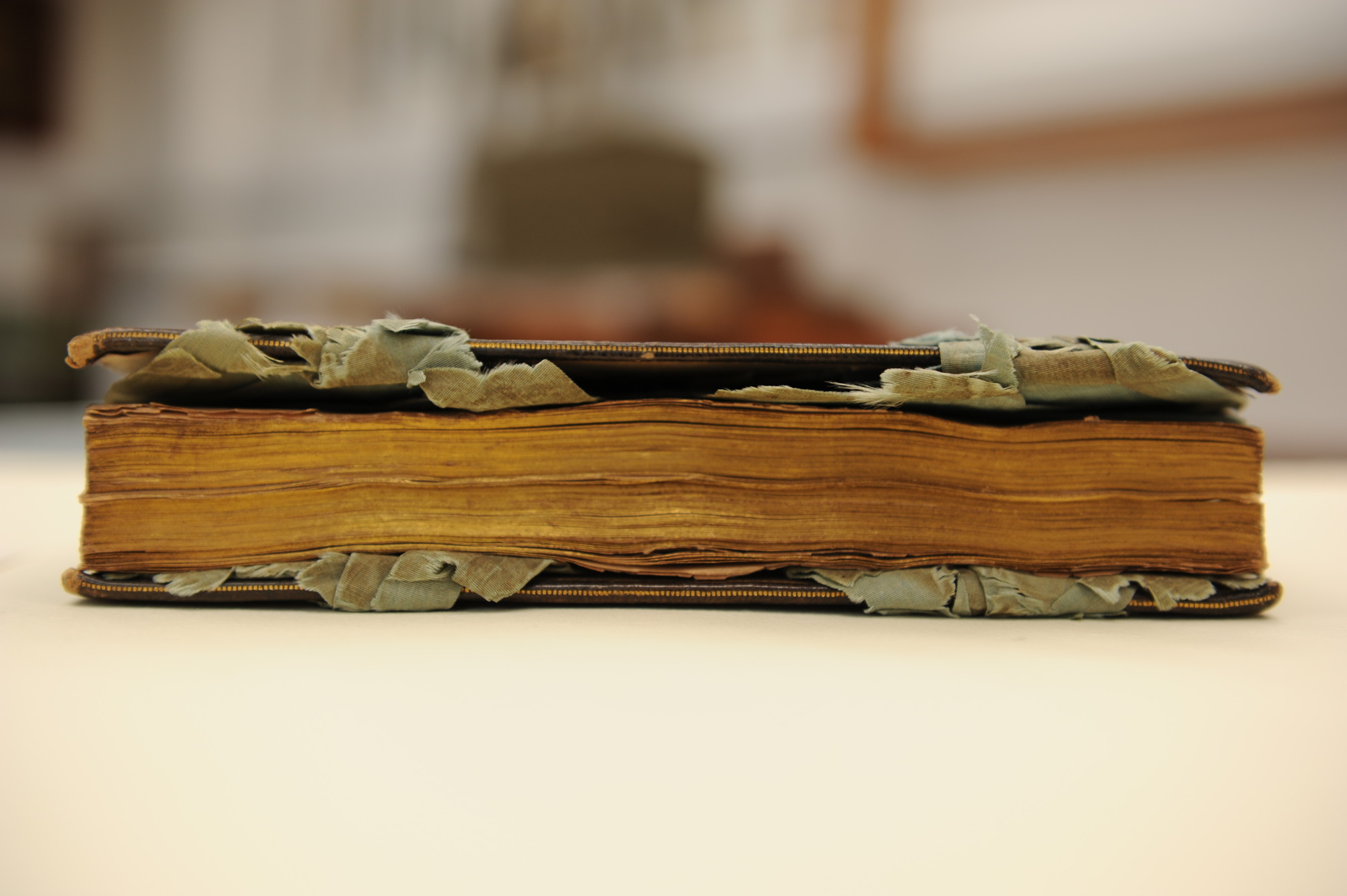
Book conservation: The Eikon Basilike
Study of this book can tell us much about its origins
Conservation of the ribbons
The removal of the ribbons was a delicate process.
The silk was made pliable by being dampened with a solution of 5% water, 95% alcohol.
The endpapers were detached from the insides of the book’s covers, then the leather was eased away and the boards delaminated by peeling back small sections until the original holes were revealed and the ribbons could be pushed through.
The ribbons were wet-cleaned with a conservation grade detergent and dried flat under glass weights which prevented the creasing from returning: after fabric is folded for any length of time the fibres create a memory of the position of the folds and will often return to these if allowed.
A specially dyed, lightweight silk fabric, coated with adhesive, was applied to the reverse of the ribbons to act as a support layer and to fill in the areas of loss. The ribbons were then laid on to a second length of dyed silk, which also acted as a support fabric.
The support stitching, which holds the ribbon to the fabric, was worked through these layers.
This silk fabric was extended past the end of the ribbon and a piece of polyester fabric was attached to it.
When the ribbons were re-inserted into the book the polyester, rather than the original fabric, was gathered to fit into the small holes in the covers.
A third layer of silk was applied as a lining for the ribbons. This final layer covered all the conservation work from the reverse and neatened the appearance of the ribbon.







